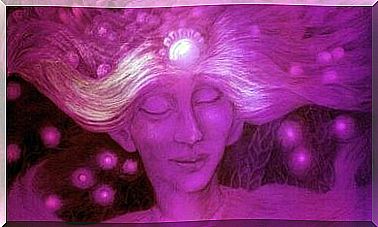Fright Or Amazement, The Sudden Loss Of Soul

Suddenly, without knowing how, there are people who feel that they have lost their soul. The cause is usually some fright or amazement, of variable origin, which generates an unpleasant sensation that lies somewhere between fear and surprise. Something sudden that makes the heart feel like it’s gone flying.
We all know the feeling that comes when a specific circumstance makes us feel that life is in danger or being threatened. This perception is often real. At other times, however, it may be determined by suggestion and not pose a danger to life.
There are people who, in response to this type of situation, after a big scare, feel that the soul has left their body. This generates great unhappiness and causes a wide and diverse symptomatology that we will analyze below.
‘Scare’ – also called bewilderment in some places – is in the DSM-5 cultural glossary, Diagnostic Manual for Mental Disorders, defined as a cultural explanation in many American peoples for psychological symptoms.

The definition of “startle or amazement” in diagnostic systems
The DSM-5 defines fright or amazement as:
As the diagnostic system informs, symptoms can appear at any time, from days to years after the event that caused the scare. In extreme cases, fright or amazement can even lead to death.
Thus, even though there are no specific symptoms that define this misfortune called fright or amazement, the symptomatology that is usually linked to these people is:
- Appetite changes.
- Inadequate or excessive sleep, disturbed sleep or presence of dreams.
- Feelings of sadness.
- Low self esteem.
- Interpersonal sensitivity.
- Lack of motivation to do daily activities.
- With regard to a somatic symptomatology, the symptoms that accompany fright or amazement may be muscle pain, cold in the extremities, pallor, headache, abdominal pain and diarrhea.

The origin and typology of fright or amazement
The origin or, what is the same thing, the events that cause this condition to appear are diverse. They usually include natural phenomena, animals, interpersonal situations and supernatural beings, among others.
The DSM-5 identified three syndromic types of fright and amazement, and each of them has different relationships with psychiatric diagnoses. It can be seen that fright or amazement is a denomination of different peoples for psychiatric illnesses that are unknown to them.
- An interpersonal scare, characterized by feelings of loss, abandonment and not being liked by the family, with present symptoms of sadness, bad self-image, suicidal ideation. It has a very close relationship with the symptomatology of major depressive disorder.
- When the fright is the result of a traumatic event that played a fundamental role in the onset of symptoms and in the emotional processing of the experience, the diagnosis of post-traumatic stress disorder seems more appropriate.
- Scare characterized by several recurrent somatic symptoms – for which the person has already sought varied medical assistance – is considered something similar to a somatic symptom disorder.
This condition entails a truly intense suffering for the affected people. The different cultures that have documented the condition also attribute magical components to its appearance.
Thus, it is curious how some cultures, such as the tzotziles, differentiate between three types for the symptoms that arise from the situation of fright or amazement (Castaldo, 2004):
- Xi-el : you don’t lose your soul.
- Komel : it is the astonishment of a fall; the soul is lost and the earth catches it.
- Ch’ ulelal : the soul is lost and no one knows where it is, it may be in heaven, in another town, in a market, around the world.
This phenomenon is not homogeneous and requires further investigation and consideration by the scientific community. That said, fright or amazement needs to be studied and attended to within the context of the American peoples, as we cannot forget its strong cultural component.








